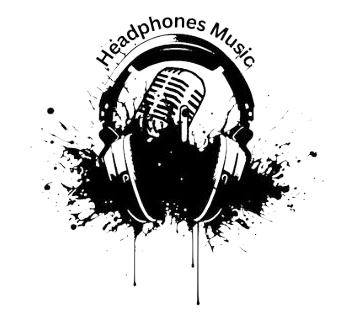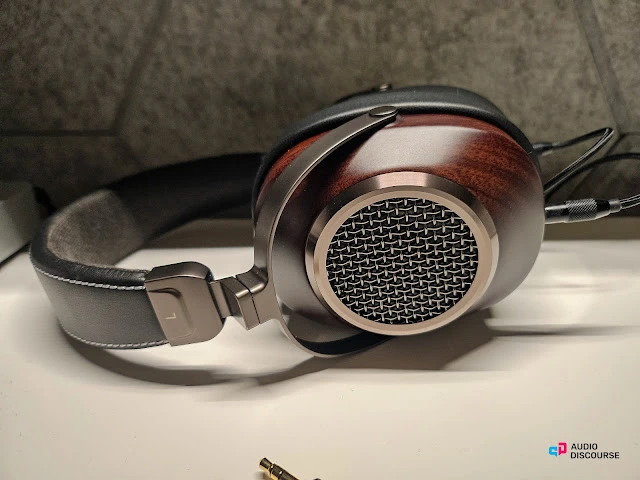Chord Mojo 2 Review & Measurement

Introduction of Chord Mojo 2 Review & Measurement
In a remarkably small form factor, the Chord Mojo 2 provides Chord’s pulse array DAC design in addition to some useful features like customisable EQ and Crossfeed, as well as some of the best performance oversampling available in any DAC.
Although I had mixed feelings about the first Mojo, I was really impressed with the second one at a meet and ended up buying one for myself to use whenever I was on the run. I paid full pay for this item out of my own pocket, therefore any views or opinions expressed here are entirely my own.
Quite an unusual shape characterises the Mojo 2. You wouldn’t quite call it a “dongle,” but it does need a phone or other source device to function as a standalone DAP.https://headphonis.com/
When compared to the original Mojo, this one is better suited for use at a desk, with features such a “Intelligent desktop mode” that extends the battery life even when left plugged in all the time.
Design
Thanks to its ATSAM3U1C microcontroller and ARTIX-7 FPGA, the Mojo 2 packs a surprising punch given its diminutive size.

The microcontroller is probably functioning as the USB receiver, while the oversampling and DSP capabilities are handled by the ARTIX-7 FPGA. The FPGA is also seen operating the pulse array converter, which is located to its right. This is responsible for producing the analogue signal; the FPGA itself is not the source.
Nestled between the two 3.5mm jacks is the output stage, which is fed by this pulse array. Contrary to popular belief, Chord DACs do in fact contain an output stage.
Although Chord’s DACs do feature an output stage, their designer Rob Watts made an effort to minimise the number of components in the signal path.
On the front of the Mojo 2 are four buttons that are lighted with RGB light. This will have divisive visual appeal, but it complements Chord’s other offerings.

For the first few days, I had a hard time remembering all the settings and had to refer to the instructions frequently; however, once you got the hang of it, you’ll be fine. With so many settings available on the Mojo 2, a more user-friendly interface would have been welcome.
The four equalisation controls can be adjusted in 1 dB increments up to a maximum of +/-9 dB.


An additional feature that many will surely find useful is the crossfeed. With a tiny delay and some attenuation, this transfers some of the signal from the right channel to the left and vice versa. The idea is to make it sound like you’re listening to music through two speakers, with the left and right channels coming through at slightly varying volumes and timing. As compared to headphones, which isolate one channel for each ear.
Not to mention that the I/O is somewhat divisive.
You should be able to connect the Mojo 2 to any device using any connection you happen to have on hand because it includes both a USB-C and Micro-USB port for data. The Mojo 2 does have a secondary micro-USB port, but that’s the only way to charge it.
Also, the charger isn’t included, so you’ll need a micro-USB 5V charger that can handle at least 2A current to power up the gadget.

For compatibility with the Chord Poly, the design has remained faithful to the original Mojo.
Review
Measurements
Measurements Include:
- THD+N vs. Frequency (SINAD)
- THD+N vs. Signal Level for Low-Level Output
- Oversampling Reconstruction Filter via Nyquist
- Disturbance caused by idle intermodulation distortion
- A linear system
- Multitone Crosstalk, Jitter, Wideband Noise, and Distortion
- The complete reports include all of the available measurements and test data.
Test Setup
- Unless otherwise mentioned, the Audio Precision APx555 B-Series Analyser is utilised with an input impedance of 100kΩ.
- USB Data coming from: Audio Precision APx555 B-Series over Coax SPDIF from an Intel PC through an intona 7055-C isolator.
- A Furman SPR-16-Ei regulated 230V power supply powers the testing apparatus and the gadget itself.
- Before testing, Mojo 2 was warmed up for three hours. During testing, it was run on battery.
- The complete reports include the specific analyzer/filter setups used for each measurement.
- Blue represents CH1 and red represents CH2.
Before we go into the measurements themselves, there are a few things to keep in mind:
Both the battery-operated and “intelligent desktop mode” versions of the Mojo 2—powered by an iFi iPower 5V—performed similarly in the majority of tests. The shown tests are conducted utilising battery power, which is probably indicative of the way most users will actually operate the gadget.
2) It appears that the Mojo 2 displays some extra noise content from approximately 7khz and above when it is directly linked to a PC via USB. This isn’t expected to cause any major issues, but it can be fixed by using a galvanic isolator like the Intona 7055-C or a good filter like the iFi iPurifier 3.0. It seems sense to demonstrate the Mojo 2’s performance with a low-noise, unground source anyway, considering it will likely be used with a phone while on the go. Thus, all data displayed are obtained when the gadget is disconnected from the PC.
In these experiments, the Mojo 2 was set to an output voltage of 4.3V. Although the user can adjust the volume to a higher level, the Mojo 2 starts clipping at this level, so this is the maximum practical output of the device. Additionally, the volume control is fully DSP. So, there’s no use in losing 6dB+ of dynamic range by turning down the volume to 2V RCA line level or a level suitable for listening on headphones during the tests. Even when the volume is reduced, the noise floor remains unchanged.
You can view the performance at 2V by referring to the -7dB or 2V point on the graphs.
Full Measurement Reports
Entire Report (SPDIF)
Comprehensive Report (USB, Insulated from the Earth)
Complete Report (USB, PC-Direct)
Results
- Complete Report (SPDIF)\
- Comprehensive Report (USB, Insulated from the Earth)
- Detailed Report (USB, PC-Direct)
THD+N / SINAD
4.3V output (maximum level without clipping), 1kHz, 0dBFS sine:
4.3V output (maximum level without clipping), 1kHz, 0dBFS sine:

1khz 0dBFS Sine, 2V output (RCA Line Level):

1khz 0dBFS Sine, 700mV output (Headphone Level):

1khz 0dBFS Sine, 50mV output (IEM Level):
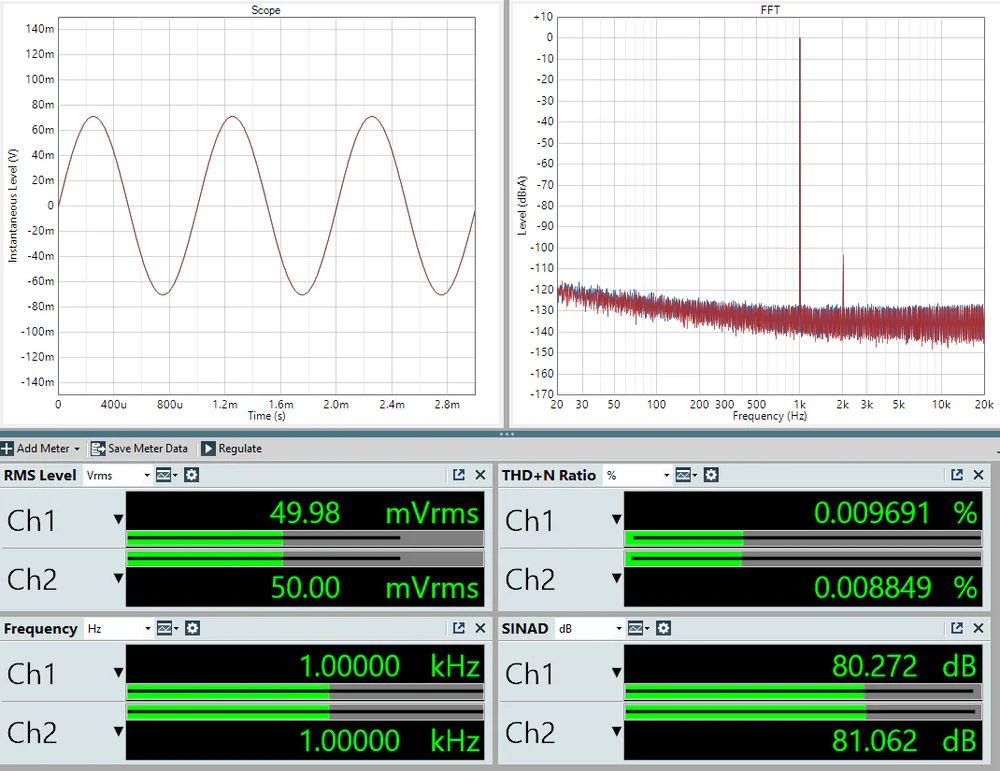
THD+N vs Frequency

(The analyzer has an AES 20 kHz filter). At lower frequencies, it produces more useful THD+N values by ignoring noise above 20 kHz, but at higher frequencies, it produces lower readings by ignoring harmonics above 20 kHz. All harmonics are considered to be above 20 kHz after 10 kHz and are so disregarded.

using the analyzer’s 96 kHz bandwidth. Results in less useful THD+N values at lower frequencies due to the inclusion of noise above 20 kHz, but a more precise depiction of increasing distortion if it is present (because harmonics above 20 kHz are still taken into account.)
There is a little increase in total harmonic distortion (THD) at higher frequencies in the mojo 2. This remains true at whatever level.
While lower THD is better from an objective sense, many people like the subjectively “sweeter” or “warmer” presentation that this might achieve. This isn’t going to be audible on the Mojo 2 since it’s not as extreme as it is on other devices, and because, unless you’re producing extremely high levels of distortion, the distortion profile is nearly completely 2nd order, making it more difficult to distinguish from the fundamental.
THD+N vs Output Level

Low Level Signal Output
-90.31dBFS 1khz sine played through device

96khz capture bandwidth

20khz filter applied
Reconstruction Filter
Device plays white noise with a sample rate of 44.1 kHz.

10khz to 96khz shown

Zoomed in to better display the region surrounding the nyquist frequency
To the best of my knowledge, Chord is the only manufacturer that offers an oversampling filter. With the Mojo 2, you get a filter with a tap/coefficient ratio of 40,960. Far superior to the 128–1024 tap filters found in the majority of current DAC chips. This implies that the Mojo 2 can accurately portray all content up to 22.05 kHz, the Nyquist frequency, with almost no undesired ultrasonic imaging or content.
Because of its stronger adherence to Nyquist theory, the Mojo 2 should provide a more accurate representation of transient time than most DACs. High performance reconstruction filters’ audibility has been the subject of much speculation due to the paucity of research on the topic. No matter how insignificant you may think it is, it’s always good to see anything done right.
Noise When Idle

IMD
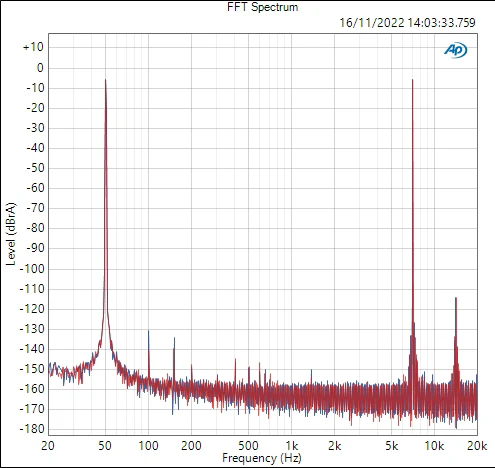
Linearity

Crosstalk

Jitter
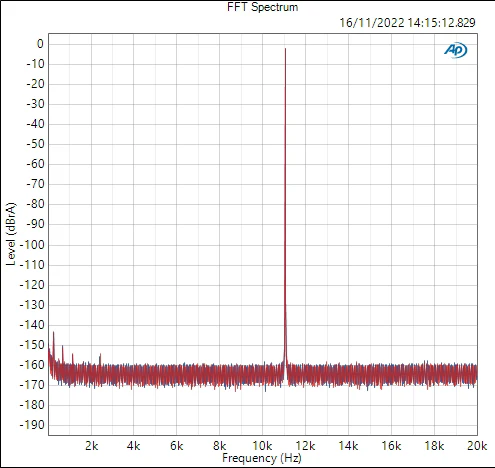
USB input, 44.1khz

USB input, 48khz
The USB input causes the jitter to appear. Even if the SPDIF inputs were comparable in quality. When it comes to jitter, the Mojo 2 is nearly flawless. Another apparent advantage of the pulse array design, and something that Chord DACs excel at, is this.
They have a very high resistance to jitter, but it doesn’t mean they’re immune.
Very good jitter performance was maintained by the Mojo 2 even when switched to optical and intentionally added 25nS of 1kHz sine jitter to mimic a really terrible source device.
You can rest assured that the Mojo 2 will deliver top-notch jitter performance with whichever source you choose.
Multitone

Wideband Noise & Distortion

Idle

Active (-3dBFS 1khz Sine Playing)
